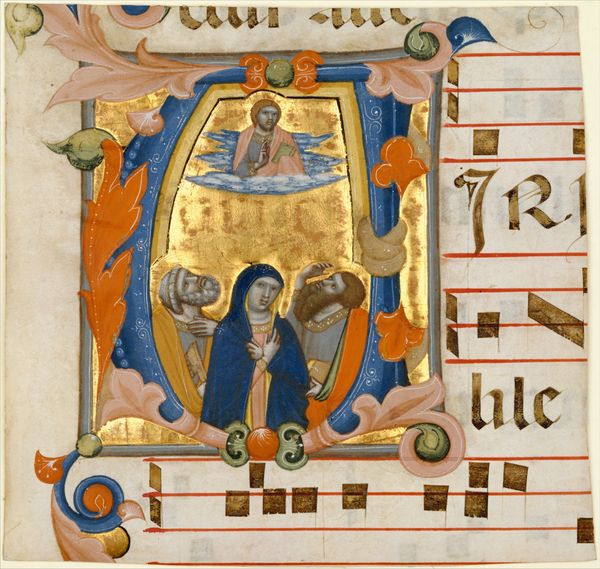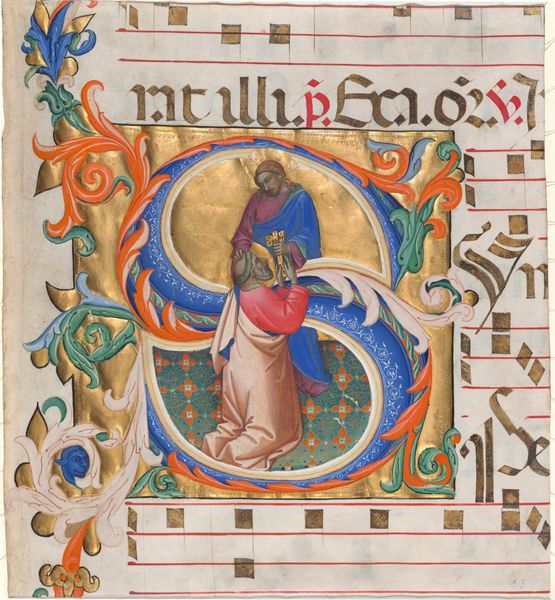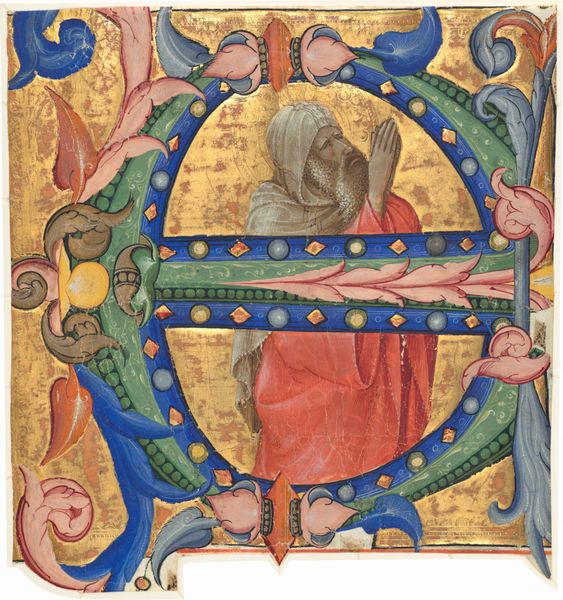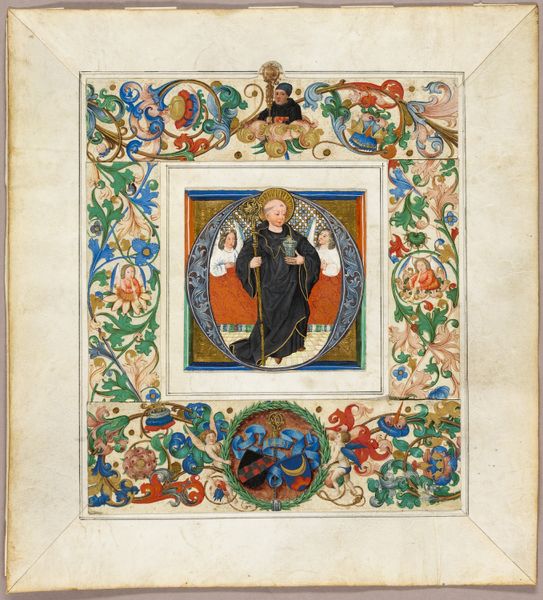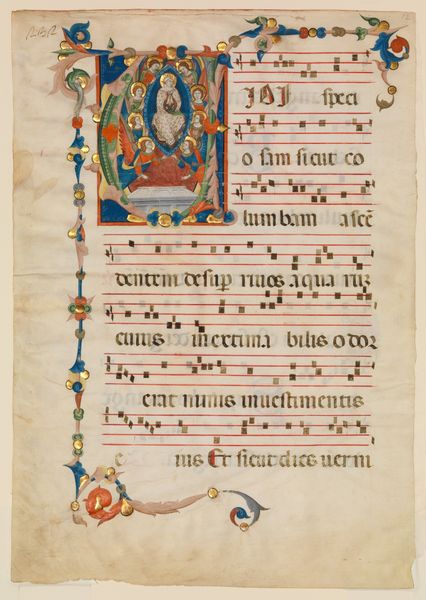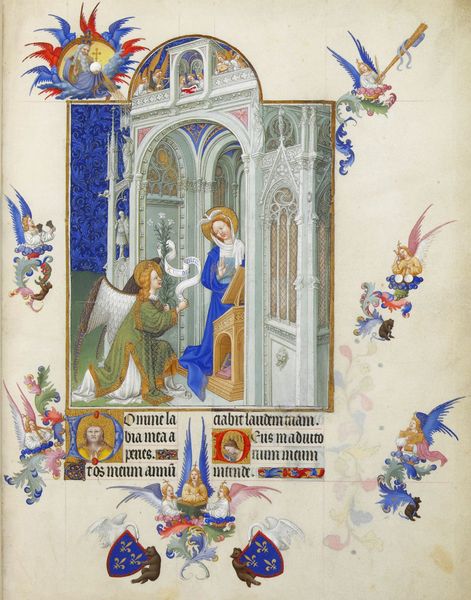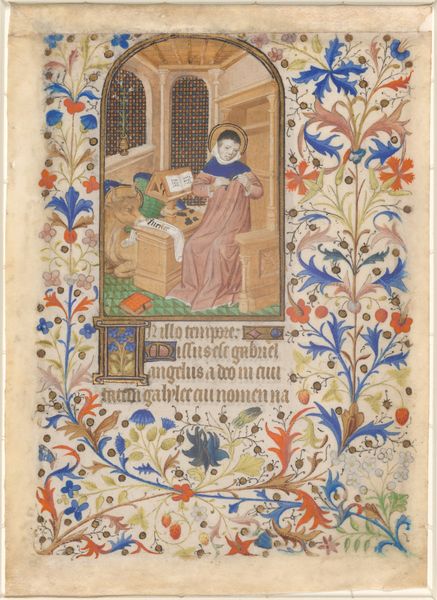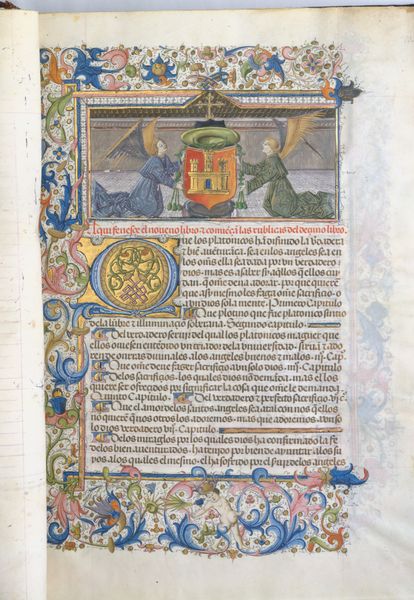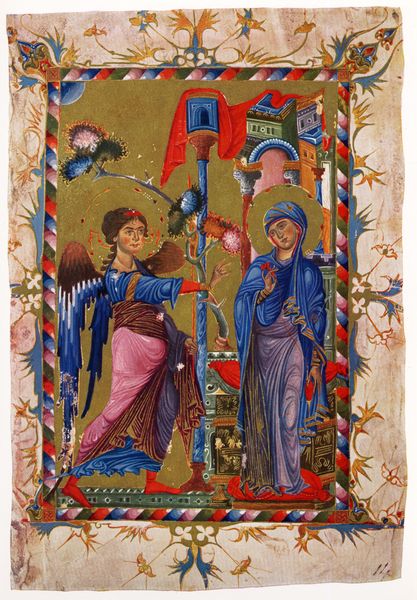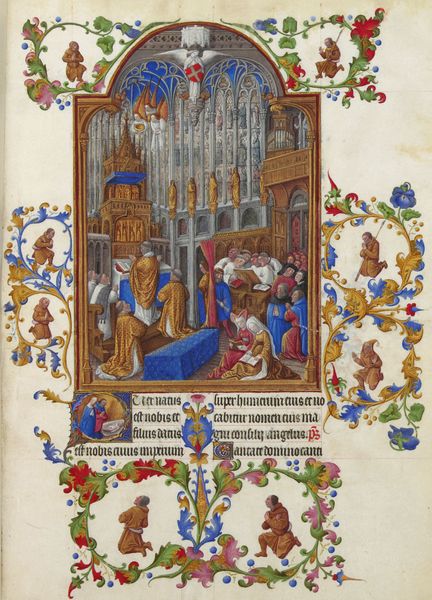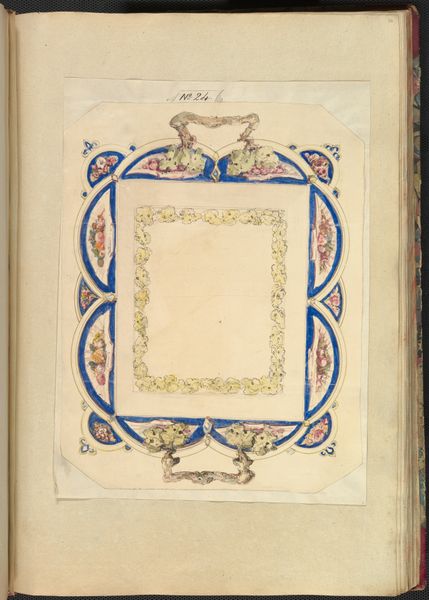
tempera, painting
#
medieval
#
narrative-art
#
tempera
#
painting
#
figuration
#
text
#
handmade artwork painting
#
line
#
history-painting
#
international-gothic
#
miniature
Copyright: Public domain
Curator: Look at this amazing page from an Antiphonary, specifically folio 3 from Cod. Cor. 1, crafted around 1404 by Lorenzo Monaco. It’s tempera on parchment—talk about a relic of dedication and artistry. Editor: Oh, it vibrates with such controlled fervor. I’m immediately drawn into the almost architectural way the figures relate to one another within the ornate border. It’s like a miniature stage for a profound moment. Curator: Indeed. The central scene depicts the Three Marys discovering the empty tomb of Christ. Observe the angel seated calmly, gesturing towards the open sepulcher while the women express a mix of grief and dawning realization. Editor: The artist uses haloes, naturally, but the way they seem to emanate light is captivating. This light clashes softly with the stark emptiness of the tomb; an absence screams where there should be a presence, a concept deeply rooted in symbolic thinking. Curator: You see that empty space framed by such decorative, sinuous lines and lush colors – it reminds us how meticulously crafted these manuscripts were. This was before print; each initial, each stroke had intentionality, even a kind of prayer embedded within it. Editor: Absolutely. Every motif whispers. For instance, consider those guards at the tomb: notice how defeated and hunched they appear. It shows that worldly power cannot comprehend nor contain spiritual truths. They act almost as emblems of humanity facing something unknowable. Curator: And Lorenzo Monaco, straddling the late medieval and early Renaissance, employs elements of the International Gothic style—notice the elongated figures and elegant drapery—while suggesting a move toward greater naturalism in the expressions. Editor: I find that transition particularly intriguing. The highly stylized forms serve as reminders of divine otherness, but the human emotion – the surprise, the confusion – offers an access point, grounding the supernatural within a relatable context. I’m compelled by how it acts as a bridge, inviting empathy even now. Curator: Seeing these details helps to peel back layers of understanding and history, unveiling how different eras use symbols. Editor: Right! What looks static in a photo gains life, reminding us of the deep human impulses reflected here. It feels profound— almost intimate, despite its age and inherent distance.
Comments
No comments
Be the first to comment and join the conversation on the ultimate creative platform.
